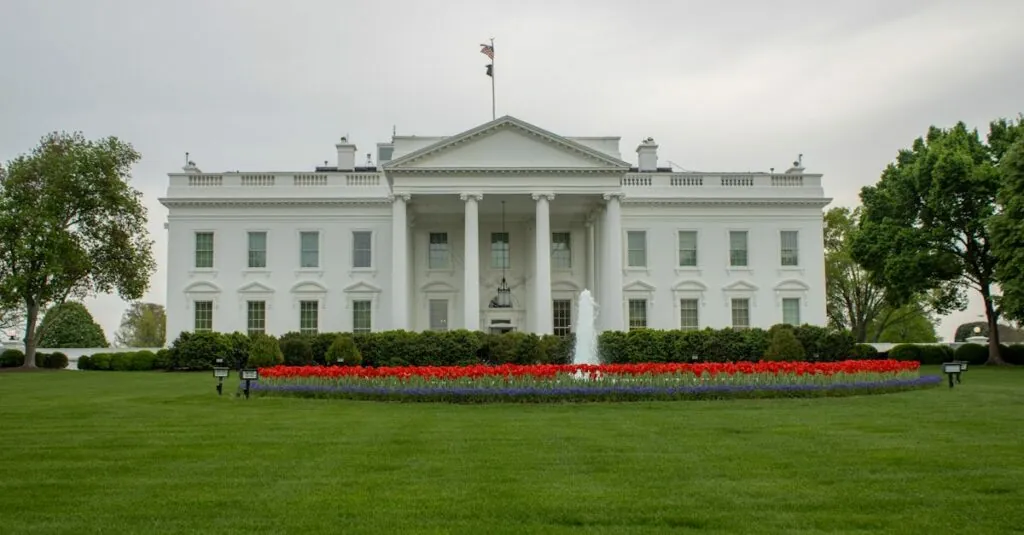Table of Contents
ToggleAs the world spins on its axis, nations hold their breath, eyes glued to screens, waiting for the latest international election results. It’s a spectacle that’s part soap opera, part high-stakes poker game—where the stakes are nothing less than democracy itself. Who knew that counting votes could be as thrilling as a cliffhanger in a binge-worthy series?
Overview of International Election Results
International election results generate considerable interest across the globe. Citizens eagerly await outcomes that often influence political landscapes in various nations. Each election cycles through a series of critical events, such as debates, campaigning, and voting, shaping the final tally significantly.
Votes are typically counted meticulously, ensuring accuracy before announcing winners. Transparency in this process builds trust among the electorate. Media outlets provide real-time updates, enhancing public engagement and participation. Officials utilize diverse methods for reporting results, including live feeds and social media posts.
Electoral systems vary by country. Proportional representation, first-past-the-post, and ranked-choice voting represent some common types. Each system impacts the way results are interpreted and understood. In countries like Germany, coalition governments often emerge, affecting local and international policies.
Analysis of international election results often reveals trends and shifts in voter demographics. Studies from organizations like Pew Research highlight changing preferences among younger voters. Voter turnout significantly affects outcomes; for instance, higher participation from young voters in the 2020 US elections contrasted with previous years.
Election results can also trigger geopolitical changes. Leaders may face challenges based on public sentiment reflected in the votes. Understanding these dynamics is crucial for analysts and citizens alike. Observers monitor campaigns to assess their implications on global relations, economic policies, and social issues.
International election results serve not only as a measure of public opinion but also as a barometer of democratic health. The reactions and responses to these results often provide insights into how societies evolve and adapt to new challenges.
Key Trends in Global Elections
Elections worldwide reveal significant trends that impact democratic processes. Observing these trends sheds light on how public sentiment evolves.
Voter Turnout Patterns
Voter turnout has fluctuated in various regions, with increasing engagement noted among younger voters. Countries like Sweden and New Zealand exhibit higher participation rates, reflecting an informed electorate. In contrast, others, such as the United States, struggle with lower turnout, particularly in midterm elections. Public interest often correlates with key issues, driving individuals to the polls. Analysis indicates that targeted grassroots campaigns help mobilize voters, enhancing overall electoral participation.
Impact of Technology on Voting
Technology has transformed how elections occur across the globe. Digital platforms facilitate voter registration and streamline access to ballots, making participation more accessible. Countries that adopted online voting systems, like Estonia, reported increased voter engagement. Moreover, social media serves as a powerful tool for candidates, enabling them to reach vast audiences and share their messages effectively. Cybersecurity remains a concern, prompting stringent measures to protect election integrity. Overall, technological advancements continue to shape voter experiences and electoral outcomes.
Case Studies of Recent Elections
Recent elections have showcased diverse political landscapes across the globe. They reflect the dynamic shifts in voter sentiment and the influence of technology on democracy.
Election in Europe
European elections often highlight trends in voter behavior. In 2023, Sweden’s elections saw increased participation among younger voters, driven by climate change activism. Observers noted that proportional representation in countries like Germany facilitated a more diverse parliamentary composition. Voter turnout was approximately 83% in Belgium, showcasing citizens’ engagement in the democratic process. The influx of new parties indicates a shift in public priorities, particularly concerning immigration and environmental policies.
Election in Asia
Asia’s electoral events illustrate varying democratic practices. In India, the 2024 general elections have sparked interest due to record-high voter registration and active campaigning on social media. Nearly 2 billion eligible voters are anticipated to participate, emphasizing the importance of grassroots movements. Recent elections in Indonesia demonstrated a clear desire for reform, as nearly 60% of voters prioritized anti-corruption measures. Regional disputes and economic stability remain crucial factors influencing electoral outcomes.
Election in the Americas
Elections in the Americas continue to shape political narratives. The 2022 midterm elections in the United States witnessed a turnout of around 50%, marking an uptick compared to previous years. Candidates capitalized on issues like inflation and healthcare, resonating with voters’ concerns. In Brazil, the 2022 presidential election drew significant attention, with a turnout exceeding 79% amidst a polarizing political atmosphere. Reports indicated a major shift in Latin American politics, as voters increasingly favor progressive agendas focused on social justice and climate initiatives.
Analysis of Political Shifts
Political shifts following international elections reveal significant trends that influence future governance. Voter engagement rose markedly among younger populations, especially seen in Sweden’s 2023 elections, where climate change concerns drove participation. Belgium’s turnout reached approximately 83%, indicating strong democratic engagement as citizens responded to pressing political issues.
In Asia, India’s forthcoming 2024 general elections showcase near-record levels of voter registration, engaging a massive electorate of nearly 2 billion. Voter turnout in Indonesia reflected an increased demand for anti-corruption measures, illustrating how public sentiment can shape legislative priorities.
Shifts in voter demographics also surfaced in the United States during the 2022 midterm elections, with a turnout around 50%. Candidates focused on inflation and healthcare, underscoring the necessity of addressing voters’ immediate concerns. Brazil’s presidential election, characterized by over 79% turnout, demonstrated how polarized political climates can galvanize voter mobilization.
Technology plays a pivotal role in these shifts, enhancing voter registration and access to ballots. Countries like Estonia exemplify how online voting systems foster higher engagement levels among citizens. Social media platforms have become crucial for candidates, allowing them to communicate directly with voters, although cybersecurity risks necessitate rigorous protective measures.
Recent elections across various regions highlight the evolving political landscapes globally. Analysts must consider these dynamics as they evaluate election results. They serve not just as indicators of public opinion but also as reflections of democratic health, essential for understanding societal evolution in response to contemporary challenges.
International election results reveal much more than just numbers. They reflect the evolving political sentiments of citizens around the globe. As voter engagement rises and diverse electoral systems shape outcomes, understanding these dynamics is crucial for grasping the future of democracy.
The interplay between technology and voter participation continues to redefine how elections are conducted and experienced. With heightened interest in key issues and shifts in demographics, upcoming elections promise to be even more pivotal. Observers must keep a close eye on these trends as they unfold, shaping the political landscape for years to come.







